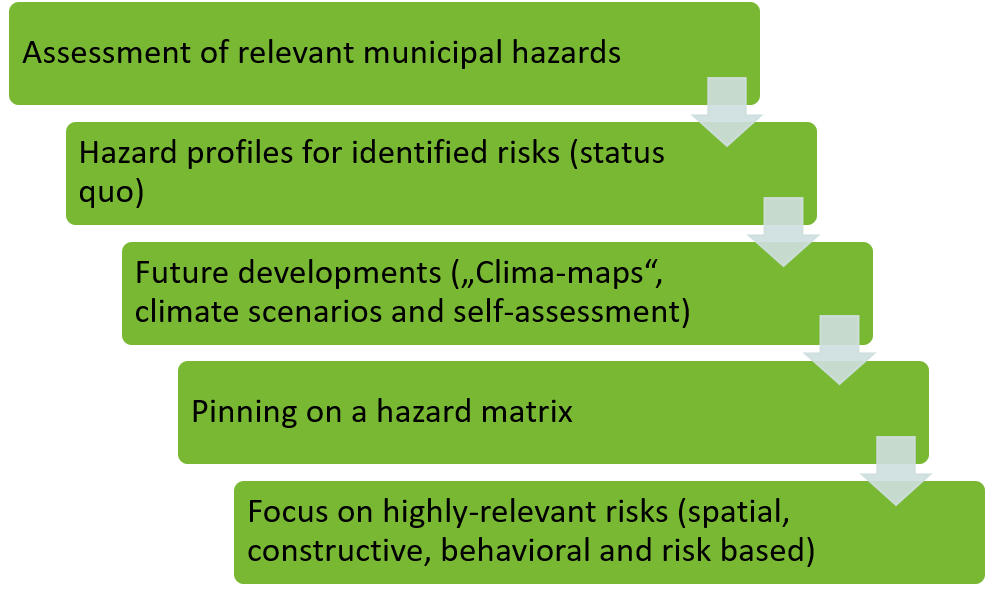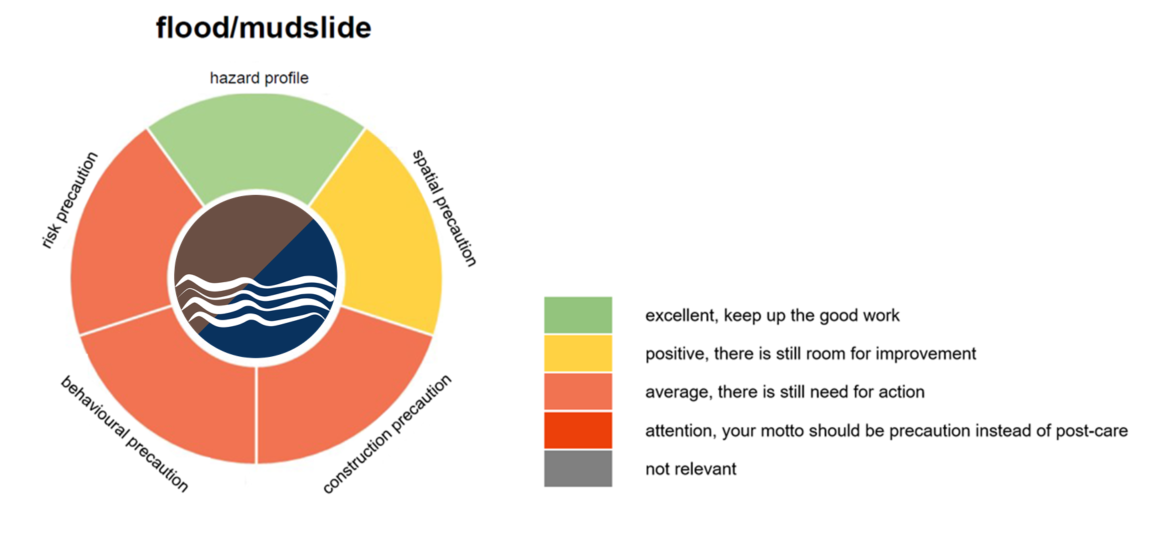How is the natural hazard check for municipalities carried out?
The duration of the natural hazard check depends on the number of natural hazard types to be processed, whereby a maximum of one full day for the check on site is foreseen. A preliminary phone discussion or virtual meeting between one of the two auditors and the municipality establishes the initial contact and serves for a first exchange of information. The modalities of the check is explained in the course of the preparation.
The natural hazard check is carried out in the municipality itself. The check is based on the methodology of a moderated self-assessment. At best, all the important decision-makers in the municipality with regard to natural hazards and climate risks participate. These can be, for example, the mayor, the head of the building authority, the head of the planning department and those responsible for the emergency services (in particular the fire brigade and rescue services). In addition, those responsible for municipal infrastructure, legal issues and administrative or financial matters can also be involved. It is advantageous, however, if no more than ten people from the municipality participate in the check.
Procedure of the check
In a first step, possible current natural hazards and their importance for the community are discussed. The relevant hazards are selected and prioritised by the representatives of the municipality. For these selected natural hazards, the respective hazard profiles are discussed. This is followed by a look into the future, considering latest climate scenarios. Based on this information, the natural hazards are located in a matrix (x-axis: vulnerability of the community, y-axis: change due to climate change). Subsequently, the check focuses on those natural hazards which are expected to be particularly relevant for the community or which are suspected to be massively aggravated by climate change.

Thematic areas
The following topics are addressed together with the representatives of the municipality during the natural hazard check in climate change:
- hydrological natural hazards including floods / mudflows and heavy precipitation events
- gravitational natural hazards including landslides / settlements, rockfall and avalanches
- climate-related natural hazards including heat, drought, forest and wildfire, storm, hail, lightning, snow and ice loads, late frost, pest calamities and invasive species
Report
Subsequently, the two auditors prepare a report. In this document, the findings of the municipality for each natural hazard are summarised, and the results are presented in the form of ring diagrams. In addition, a qualitative description of the current precautionary state is given, as well as recommendations for further steps, especially considering changing climatic conditions. The municipality receives the full report and a confirmation of the successful completion of the precautionary check. The auditors treat the results confidentially. The decision on the results publication lies with the mayor.

